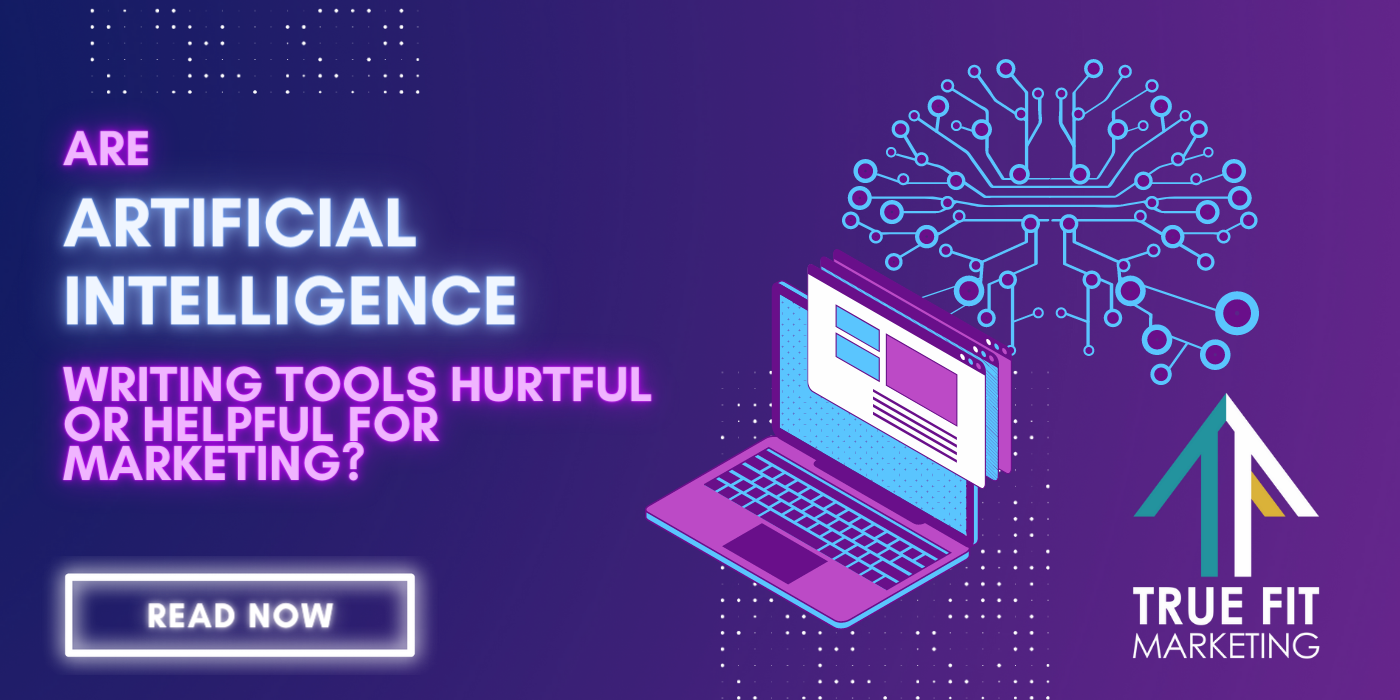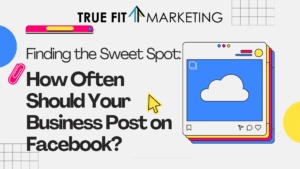
It seems like in the recent month, the discussion of artificial intelligence (AI) has really blossomed. Marketing teams that are utilizing AI for positive gains are skyrocketing. AI writing tools are flying at us faster than ever before. A once very scary idea has now flourished into user-friendly programs that can help promote brands and businesses in a faster, more efficient way than ever before. The floodgates have been opened to many impressive AI options on the market, so let’s take a look at three tools that we find helpful and are interested in using more!
Canva
Our team uses Canva on a daily basis for many things, especially graphic design. Not everyone on our team is a professional design and Canva makes it easy to create nice graphics. It was exciting to hear about their newly released AI intelligence suite. A whole new slew of features are designed to make creating content like social media graphics, presentations, and advertising materials more accessible to those without professional design experience. Beyond graphic design, Canva also has AI writing technology that helps to create high-quality content. We find it useful to help with social media posts. It is a great tool to use when writer’s block happens and the words just won’t come out right. If you are nervous about AI tools, we suggest starting with Canva’s suite as they are now being touted as a competitor of Adobe! It is easy to use and still needs the human aspect to get it to write something that sounds good.
ChatGPT (Chat Generative Pre-trained Transformer)
Released in November of 2022, ChatGPT is a computer generated conversational tool. If you are not familiar with ChatGPT, we are sure you have used Amazon’s chat feature and have had to have a conversation with their AI to get your issue resolved. ChatGPT is similar to that in which it will follow an instruction in a prompt and provide a detailed response. Take a look at the sample below in which the human asks ChatGPT about a coding issue.
ChatGPT responds looking for more information to help it help the human. It collects data from the human and learns from the human feedback of responses. However, it does have its limitations. According to their website, these are the limitations:
- ChatGPT sometimes writes plausible-sounding but incorrect or nonsensical answers. Fixing this issue is challenging, as: (1) during RL training, there’s currently no source of truth; (2) training the model to be more cautious causes it to decline questions that it can answer correctly; and (3) supervised training misleads the model because the ideal answer depends on what the model knows, rather than what the human demonstrator knows.
- ChatGPT is sensitive to tweaks to the input phrasing or attempting the same prompt multiple times. For example, given one phrasing of a question, the model can claim to not know the answer, but given a slight rephrase, can answer correctly.
- The model is often excessively verbose and overuses certain phrases, such as restating that it’s a language model trained by OpenAI. These issues arise from biases in the training data (trainers prefer longer answers that look more comprehensive) and well-known over-optimization issues.1,2
- Ideally, the model would ask clarifying questions when the user provided an ambiguous query. Instead, our current models usually guess what the user intended.
- While we’ve made efforts to make the model refuse inappropriate requests, it will sometimes respond to harmful instructions or exhibit biased behavior. We’re using the Moderation API to warn or block certain types of unsafe content, but we expect it to have some false negatives and positives for now. We’re eager to collect user feedback to aid our ongoing work to improve this system.
ChatGPT can really be useful to gain information, to help with issues and to bounce ideas off of. It can be a helpful tool if used in the correct way.
 Jasper
Jasper
Jasper touts itself as an AI platform for business that helps your team create content tailored for your brand 10X faster, wherever you work online. Headlines, articles, blog posts, captions for social media, email marketing campaigns, and even translation are just a few examples of what Jasper can offer. A frontrunner in its capabilities, Jasper is also a leader as far as bang for your buck. However, just like many of these AI tools, it collects information from the Internet and compiles it into whatever category you choose (ex: blog post). The only fact checking is then from whoever is “writing” so some research should be done to make sure it is all true.
The Bottom Line
Writing is a gift that a lot of people don’t have. Just like we have musicians and athletes and so on, each person is unique with their talents. However, to a writer, using AI writing tools can seem like cheating, or not actually being the author. Proofreading, researching facts and citing sources will still need to be done no matter what program you use.
It is scary to think about whatever we are reading and if a human wrote it or some AI program. Doesn’t it make you wonder about authors now? What about employment for writers in the future? Are human writers just going to be shoved to the wayside because now AI tools can do their jobs? It is impossible to know the future, but it is definitely something to think about. Would you rather have a real human behind your written words of your business and brand or an AI robot just putting words together to make them sound nice? And just for your knowledge, we didn’t use an AI tool to write this blog, but it doesn’t mean we won’t in the future!


 Jasper
Jasper
















































